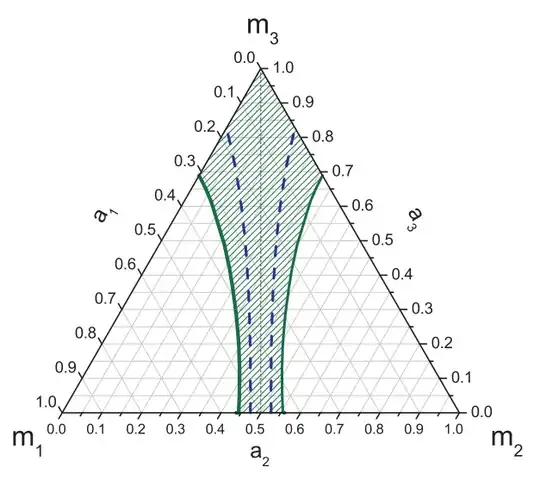This is batted a bit off the wall, so bear with me. The hydrogen molecular ion, $\mathrm{H}_2^+$, is the simplest three-body system in molecular physics, and in the Born-Oppenheimer approximation its electronic Schrödinger equation is separable (though it's unclear whether it's actually exactly solvable).
Now, an old paper of A.H. Wilson, (The Ionised Hydrogen Molecule, Proc. Roy. Soc. Lond. Ser. A, Math. Phys. 118 no. 780, pp. 635-647 (1928)) shows that the electronic Schrödinger equation $$ \left[-\frac12\nabla^2-\frac{Z_1}{\|\mathbf r-\mathbf R_1\|}-\frac{Z_2}{\|\mathbf r-\mathbf R_2\|}\right]\psi(\mathbf r)=E\psi(\mathbf r), $$ when separated in the elliptic coordinates for internuclear distance $2c$ \begin{align} \xi&=\frac{1}{2c}\left(\|\mathbf r-\mathbf R_1\|+\|\mathbf r-\mathbf R_2\|\right) \quad\text{and}\\ \eta&=\frac{1}{2c}\left(\|\mathbf r-\mathbf R_1\|-\|\mathbf r-\mathbf R_2\|\right) \end{align} as $\psi(\xi,\eta,\phi) = X(\xi) Y(\eta)e^{im\phi}$, for $\phi$ the angle about the internuclear axis, reads \begin{align} \frac{\mathrm d}{\mathrm d\xi}\left[(1-\xi^2) \frac{\mathrm d X}{\mathrm d\xi}\right] +\left[\lambda^2\xi^2-\kappa \xi -\frac{m^2}{1-\xi^2}+\mu\right]X&=0 \\ \frac{\mathrm d}{\mathrm d\eta}\left[(1-\eta^2) \frac{\mathrm d Y}{\mathrm d\eta}\right] +\left[\lambda^2\eta^2-\kappa' \eta -\frac{m^2}{1-\eta^2}+\mu\right]Y&=0, \end{align} where $\lambda^2=-2c^2E$ is the eigenvalue, $\mu$ is a separation constant which must be found (and which annoyingly appears in both equations), and \begin{align} \kappa & = 2c(Z_1+Z_2),\\ \kappa' & = 2c(Z_1-Z_2). \end{align}
OK, so that's a lot of set-up, but this is what I want to ask: I notice that the Schrödinger equation above is weirdly symmetric with respect to the combinations $\boldsymbol{Z_1+Z_2}$ and $\boldsymbol{Z_1-Z_2}$ of the two nuclear charges, so there are probably some weird symmetries of the electronic wavefunctions if you flip the charge of one of the protons - i.e. switch it for an antiproton, and pretend that the two are not going to annihilate within some meaningful timespan.
With that in mind, then: has this been explored in the literature? Does the resulting $p^+p^-e^-$ system, with one proton, one antiproton, and one electron, have bound states? (Intuitively, you'd expect the electron to bunch around the proton with most of the probability on the far side from the antiproton, thereby partially shielding the $p^+$-$p^-$ attraction, but hopefully this would be insufficient to completely kill that attraction.) If so, what exactly are the relationships between its electronic eigenstates and those of the hydrogen molecular ion?
